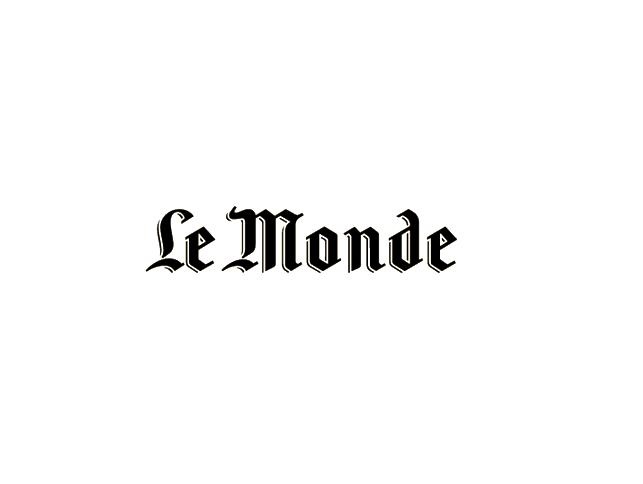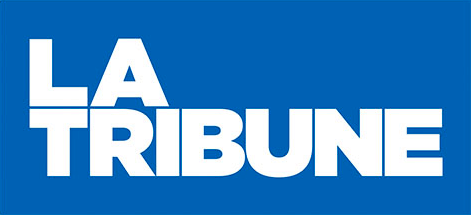Is banking experiencing Uberisation? And if so, how do we deal with it? What assets do we have? There are certain analyses and lines of reasoning that we can put forward with a fair degree of certainty without looking into a crystal ball.
The word “Uberisation”, broadly speaking, can refer to the threat to an established model posed by a series of innovations and new players. We shall focus here on retail banking since it is, in principle, more greatly affected by this phenomenon than corporate banking. There are various types of digital innovations that may find an application in the banking sector: robotisation, the digitalisation of processes, of contracts and signatures, big data, artificial intelligence, payments, payments and many more. Clearly, these innovations are causing many profound changes and are creating a number of possibilities for revolutions that need to be analysed and incorporated into our strategies. Two types of profound change in particular are interesting to study.
The first approach involves asking the question of whether digitalisation could go as far as to do away with branches, or at least a significant reduction in the network bank model. This is a question that needs to be asked since there are far fewer customers visiting branches. We can therefore legitimately ask ourselves whether this will continue, whether this reduction is affecting all branch-based roles and whether we are heading towards an almost unique model of online banking or neo-banking.
The second approach involves studying the extent to which this technological revolution is allowing a number of start-ups, such as the fintechs, to grow and compete with commercial banks on one part or another of their value chain. Is there a possibility, in this case, that, in time, profitable segments will be lost? Could profitability fall without jeopardising the network banking model in the process?
These two questions are important and different, even if the answers one might give to them sometimes merge into one.
The first approach is fundamental: can we imagine a world where banks have no branches? This is what some analysts are claiming, speaking of banking’s “tomorrow’s Kodak” or, a little less radically, “the next iron and steel industry”. This question cannot be ignored. On the contrary, we need to get to the bottom of things. This subject merits answers founded on solid analyses. First of all, we need to differentiate the issue of digital from that of interest rates. We can see the convergence of these two phenomena but neither has anything to do with the other. On the one hand there is a very flat interest rate curve that is damaging the profitability of retail banks. We can reasonably expect that these rates will rise again, specifically with a sufficient gap between short- and long-term rates and a central bank which will gradually emerge from quantitative easing. We expect the ECB to make announcements in this vein at the end of October.
On the other hand, we have digital and its impact on profitability. I think we need to be careful not to answer the question of interest rates with digital by thinking that low rates structurally change the model. The interest rates as they are today do not change the model in itself but temporarily damage profitability, which is not exactly the same thing.
In my opinion, the line of reasoning to be followed involves going back to basics: What is the very essence of a retail bank? What is the essence of the banking relationship? Here we need to distinguish those non-variable contextual points which vary depending on current technology and how they are used by customers. In retail banking – the model of which can incidentally differ by country according to the customs and habits that are specific to each one – there are two major areas: everyday, transactional and relationship banking, that of “life plans” and advisory banking. These are two very distinct banking requirements, even if their paths often cross.
Clearly, everyday banking involves current transactions: picking up a cheque book, making a payment, making cash withdrawals or deposits etc. This type of banking practically no longer requires a network, even if there is still demand, albeit ever decreasing, to go the counter. The development of the internet, smartphones and automated machines means that this transactional banking practically no longer requires a network to carry out these common transactions. This reduction in visits to banks is very significant overall. This is very important because the demand for “cashiers” is becoming increasingly small and this must clearly be integrated.
On the other side is relationship banking, that of life plans and advisory services ̶ as well as being the banking called upon at those difficult times that can come upon everyone sooner or later – which essentially characterises the most profound relationship between private individuals and their bank, going far beyond managing means of payment. This is the long-term relationship with customers. This is crucial because this long time is linked to the fact that their life plans are being taken care of, both in their development and their deployment. These can be very important projects: financing one’s studies, your first start in the professional world, buying a home, preparing for retirement or planning for your heirs. They can also be small life plans that are linked, such as preparing for a trip or buying a car. This is all part of a world in which banks are entirely legitimate since they meet the needs of customers by offering them the necessary products, namely loans, savings and, of course, insurance (for property and people), which enables them to be protected. These plans require time to be for them to be prepared and brought to fruition. This creates a long and strong relationship of trust between customer and banker since it relates to the security of one’s property, person, family and, fundamentally, one’s well-being. The world of needs served by relationship banking is therefore a long-term one, just as loans, savings and insurance are long-term products.
It is a nomal and commonplace for thoughts to be polarised within society: at the end of the 1990s and throughout the 2000s, there was a lot of debate over whether mass retail would replace banking. At that time many people wrote knowledgeably that mass retail would remove whole swathes of banking. This is not what happened, however. Back in 2004, I wrote a long article in Les Échos on this subject. My thought process stemmed from the following point: mass retail deals with the short-term because what is bought through this medium is consumed almost immediately. If this does not satisfy us, it’s easy to change to a different brand or even a different outlet. In banking it is difficult to change quickly, depending on the consumer experience, because if someone takes out a loan, makes savings or takes out an insurance policy, this is generally a long-term affair. This is why bank advisors need to remain in their jobs for a sufficient length of time. This is also a strong demand from customers. Whereas in mass retail, by and large, there are no more “sales representatives” in store. I have never truly believed, therefore, that mass retail can take significant market share from banks, specifically because the fundamental analysis of what makes the very essence of what was the banking relationship led me to believe that no-one would buy savings in a pre-packaged form. The only meeting points between mass retail and banking are consumer credit and payment and loyalty cards, both of which are an exact extension of the act of purchase. There is therefore only one area in which, until now, there has truly been competition between mass retail and banks.
Furthermore, depending on the country, there are different mixtures between relationship and everyday banking models. A study carried out on behalf of the French Banking Federation in 2010 sought to discover which countries had a strong relationship model. France stood out as one of the strongest countries. This does not mean that French banks are not transactional but simply that they placed relatively more weight on the relationship aspect than many other countries do. Countries that have models which are far more transactional than relationship-focused therefore have a vested interest in closing large numbers of branches since branches have little new to offer. In relationship-focused banks, something else is going on.
Therefore, people are visiting their banks less and less for everyday matters, that is certain. However, will people’s appetite for relationship banking decline? For the last decade or so, relationships with banking networks have been evolving: physically and due to telephone, e-mail, visual communication and live chats etc. These are not however removing the need for banking advisors. Although banking advisors are needed as much as ever, if not more, it is therefore important to know where to place and accommodate them. Customers want to see their advisors face to face on a regular basis, for more complex subjects or for simple reassurance. Having branches closer to them is, therefore, not entirely incongruous, especially since branches, as a place where banking takes places, also act as reassurance for many private individuals and even professionals. Therefore, since we already have branches nearby, why deprive ourselves of this asset, especially when they offer us miles’ worth of advertising space in our branch windows that even online banks envy?
Therefore, relationship modes evolve and complement each other but they are not killing each other off. The essence of what they are is not changing because there is no fall in demand for banking related to life plans, far from it in fact. With the advent of the Internet, customers are ever more demanding when it comes to the quality of advice because they are adept at browsing the web to find out information and to compare and switch if they need to. They require their advisor to be even better, more responsive and more proactive than before.
In reality, the fact that fewer people are going to “counters” is an opportunity for banks and this is not a paradox. Firstly, digital is taking repetitive, unpaid tasks away from the counter, thereby reducing costs. We can therefore offer a lot more business time to customers who request more and, in doing so, make customer advisors out of those employees who used to be at the counters. Most of the time these are young people in their first job who don’t expect anything different, therefore making them easy to train. Thanks to digital, business time is developed and therefore avoids repetitive tasks for experienced sales staff.
The second argument, which follows from the first, is that we increase the productive business time of our own advisors, which increases our productivity. Our net banking profit is therefore increased by our ability to better serve and advise our customers and therefore meet their needs.
Thirdly, the customer experience is clearly made easier by digital since certain operations are much more easily handled remotely or by machines. Customer satisfaction is therefore increased because the bank becomes more practical.
Lastly, digital is also an opportunity because it makes it possible to improve the relationship model itself. Big data and artificial intelligence, which we are gradually trying to integrate, may allow us to better understand our customers and their needs, to better prepare for our meetings and therefore serve customers better. This therefore makes us much more efficient. This is about intelligent commercial productivity, which really satisfies customers since they will only be called regarding things that concern their true needs.
Increasing the practicality of our banks and the quality of the advice are therefore two fundamental keys to success. There are two axes that allow the banks to do this: training, the budget of which we have increased significantly at BRED, and digital itself!
We therefore need to ensure that online banking is just as practical. Of course, if we ensure it is just as practical but we don’t have correspondingly low prices, there needs to be something else that sets us apart: high quality advice. Without wanting to criticise them, because they are perfectly legitimate, purely digital banks do not have advisors.
Customers in France actually want both: highly practical everyday banking and an assigned advisor who can provide them with added value. They will only, therefore, seek to separate transactional and advisory banking or even to be satisfied with just one low-cost everyday bank if their usual bank does not excel at these two levels.
Retail banks therefore have a certain comparative advantage, provided that today, on the one hand, they continue to invest so they are as good as online banks when it comes to the practicality of everyday banking. Nothing impossible here. On the other, they also need to make sure that they can provide quality advice at the same time, the added value of which warrants remuneration. Significant investment in digital and training are therefore definitely two keys to success.
However, the agile organisation of each branch and of the network and optimising the use of resources to ascribe them to the most productive in terms of net banking profit is also crucial. In certain cases, banks may close branches because the need for transaction counters is disappearing. As a result, we effectively no longer need to have a branch every 200 metres in large cities, even if we still need branches to provide advice. Therefore, according to the configuration of banks today, the number of branches to be reduced may be quite different.
It should be added that, for the moment, online banking is not profitable precisely because it is having great trouble equipping customers. Furthermore, in order to gain customers, it incurs considerable cost corresponding to the need to advertise more than the other banks. Since they have no “shop windows”, online banks need to attract the customer before they spontaneously visit one of our branches. In the same vein, online banks need to offer many more gifts and free offers. For example, customers typically receive 80 euros for opening an account, but many students go to several banks one after another to collect these incentives in turn. Enhancing loyalty is not easy, therefore. As a result, online banking focuses mainly on transactional banking. It is therefore quite difficult to monetise these models and capitalise on customers unless they start to expand their offering and assign advisors, which is starting to happen here and there. If this were to develop, it would be very interesting since there could then be transactional banks that go digital and online banks which would start to play the traditional banks’ game by appointing advisors. Both types of bank would then start drawing nearer to one another in an interesting way.
However, this begs the question: can advisory services be digitalised? Can we do without humans therein? We could of course say the following: with quality big data and good automatic intelligence, automating “pushes” (text messages or e-mails) to customers would render the human advisor useless. The customer would receive intelligent suggestions, sometimes even more intelligent than those an advisor who has not been sufficiently trained or assisted would make. Why, therefore, would we need banking advisors in future since everything would be digital?
We are convinced that the opposite is true, even if it is impossible to predict with any certainty what will happen in ten or twenty years’ time.
We know that machines can beat humans in many areas. We also know that humans and machines acting in concert beat the machine alone. We need to remain very modest, however, because who knows today what artificial intelligence will be capable of tomorrow? Artificial intelligence experts themselves remain very cautious. There are, however, some key elements to be borne in mind.
The first element is that trust is a key part of the banking relationship for a very simple reason: people are trusting us with their money and helping them to construct their life plans. We enter into the inner world and security of people and their families. Having an interpersonal relationship allows us today to cultivate infinitely more trust than is possible with a robot, even an “intelligent” robot. The youngest among us, who are extraordinarily accustomed to digital, for example, need our banks to have assigned customer advisors, even if they are visiting our branches less often. At BRED, we have also experimented with sending commercial proposals to groups of customers who are in identical situations via text message or e-mail. As is always the case with mailings, there was a positive response rate of around 2% to 3%. We then sent out e-mails or texts again to other people with identical characteristics and then had the customer advisors ring them regarding the same subject. Our success rate then multiplied ten-fold. This very modest experiment therefore provides some hope for the human relationship.
The second challenge hinges on the fact that the basis for trust also resides with the institution’s reputation, which is an added value and an asset for banks.
Moreover, cognitive science currently shows that, to be able to make a decision, rational intelligence but also emotional intelligence is needed. Studies present certain cases of people who have been injured and lost the use of part of their brain used for emotional intelligence. They are therefore entirely incapable of making decisions even though their capacity for reasoning and analysis remains intact. Advances in cognitive science therefore demonstrate that, in order to make a good decision, we need to have an inkling of the solution as well as good analysis. Therefore, the human relationship can be a powerful aid in the decision-making process. In the same vein, econometric studies have recently updated the belief that a lesson could be learned more successfully in a “classroom setting” with a teacher, than through massive open online courses (MOOC). This in no way calls into question the extraordinary interest MOOC have in disseminating knowledge and their ability to reach many more students. However, this does not mean the classroom teacher has no future.
Finally, every day we receive more diverse and varied requests from people or organisations we do not know, in the form of “push” e-mails or text messages. A few years from now, we will all be saturated with these requests, if we aren’t already. What will make the difference at that point are humans capable of calling, in addition to these “pushes”, providing additional added value. This differentiation will surely prove decisive.
For all these reasons, retail banks will probably not be threatened with extinction by what seems to be a possible “Uberisation”.
There is a second approach that involves asking ourselves whether there is a possibility that profitable market segments will be lost due to external players like fintechs.
Let’s take fintechs which are flourishing. We are seeing more and more development of services proposed on certifications and authentications, biometrics, budgetary management, electronic safes, aggregators, payments, blockchain etc. The question therefore is: is there a risk of becoming disintermediated, as a bank, from portions of the banking chain that would be profitable?
The example that could be of legitimate concern is that of external aggregators which are now capable of accessing data, suggesting bank transfers and therefore initiating payments. On top of these, they can also add budgetary management services and suggest best-priced banking products. What could actually stop them, in future, from analysing our customers’ data and offering them the banking services they need? Such players could, for example, offer consumer credit by using brokers and suggest the cheapest provider – though not necessarily the most suitable one – which may not be the customer’s traditional bank. This hypothesis of banks being partially disintermediated is perfectly foreseeable.
I think – perhaps wrongly – that these fears may be exaggerated.
Firstly, many fintechs will not have access to customer data, such companies being, for example, those that offer budgetary management software. These companies will have difficulty in taking market share away from certain segments that are currently operated by banks. There are therefore two solutions open to them: either they cooperate with specific banks, the former being bought out by the latter or by forming a more or less exclusive partnership, or they form cooperative platforms with several banks in order to offer services that can be shared. Thus, they invite and integrate themselves into the banks’ value chain without disrupting their model. They would even help to enrich it since banks would become even stronger in the global model with their customers by expanding their services. For example, in the BCPE group, we sought out fintechs to offer professional customers CRM solutions linked to payments. Therefore, either the banks have the IT investment capacity to enhance their services themselves or they can look to subcontract. In fact, the reality is, of course, a mixture of the two. What does change, however, is the fact that banks were wont to do everything themselves, whereas in the future this is also likely to be an assembly profession, not just a complete, fully integrated profession. There’s nothing wrong with assembling as long as that allows us to expand our overall relationship base and our revenue.
The second case, which could of course pose a problem, is the one in which fintechs will have access to some of the data. Web scratching – which may soon be prohibited or at least highly regulated – and, more generally, DSP2 and APIs, pose the question of opening up banks’ data and customer accounts. Currently, all banks have built their aggregators to try to make sure that their customers don’t need to leave the bank’s environment to access their accounts at other banks and this works well. In future, by regulation, accessing data will be accompanied by strong authorisations which will certainly, and legitimately, make it much more difficult for external players other than the customer’s bank to process data (whether or not these players are banks).
The discussion is also currently focused on knowing which data can be accessed. We can say that there is growing awareness amongst customers, and the population in general, of the danger of allowing uncontrolled use of their data. This trend is likely to accelerate, being particularly noticeable among young people. This awareness will most likely put the brakes on any intrusion.
Furthermore, a new data protection regulation will be implemented next year (the General Data Protection Regulation – GDPR – which will apply from May 2018), which will reiterate the fact that the data belongs to the customers and that any use of such data must be approved by the customer. This will apply not only to banks but also to all data users. This is probably good news since, even if it is difficult for banks to justify everything, this regulation will make it possible to slow down the arrival of third parties that wish to use this data in a cavalier fashion, which will again put the brakes on intrusion. Banks must remain this trusted third party which processes people’s personal data and they clearly must not be allowed to disclose this information without the customer being aware of this and giving their consent.
Once again, therefore, banks’ ability to provide for and improve their overall relationship model with their private customers will be a deciding factor in resisting Uberisation while integrating and offering new services that meet the needs of the customers served by banks.
Therefore, if banks invest heavily in training and digital and carry out the essential changes their organisations require, there is no reason to believe that the retail banking model is dead. However, as with all enduring models, it no longer needs to be a chemically pure model. On the contrary, that model now needs to be intimately combined with digital. Today we are seeing in all areas of distribution that purely digital models are having a hard time surviving and that purely physical distribution models are dying out. The future will involve this mixture, with the right replies being found in understanding what the very essence of the banking relationship is. It seems to me that this is possible.
The risk of Uberisation will also, as in other sectors, have provoked strong competition, which is essential in a sector that is highly regulated and poorly suited to swift changes. We must be lucid, however: this stimulating effect which, overall, has led to an improvement in the banking model and benefited its customers, is not the only factor. A reduction in profitability, all other things being equal, caused by new players entering the market and putting pressure on prices, is likely. However, other sectors can no doubt be developed in parallel, connected with the recurring activity of commercial banks, which will see their revenue grow.
The risk of Uberisation, to quote the title of the conference, must be assessed in depth in the light of the assets that can be mobilised by commercial banks. Coming out on top, therefore, seems possible. But this is contingent on correctly appreciating the changes that need to be made and the adoption of a deliberately offensive strategy by these same commercial banks.





